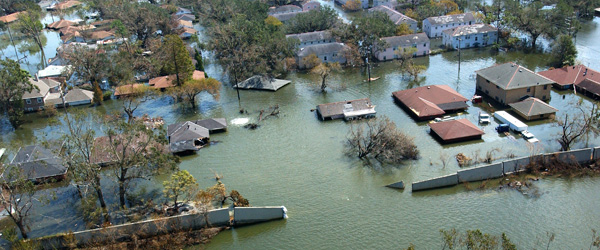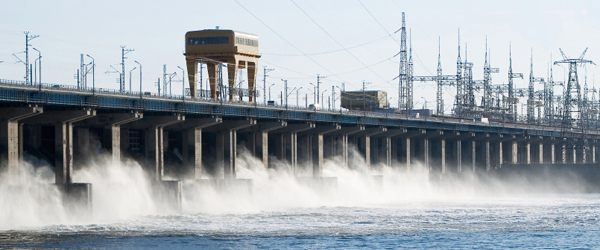Flooding occurs throughout the year across the United States and results in more damage in the U.S. than any other weather related event. On average, floods cause near $8 billion dollars in damage and 82 fatalities annually. Being prepared and knowing how to stay safe will help you and your loved ones survive a flood.
There are many types of floods: freshwater flooding of land and water caused by heavy rainfall and/or snowmelt, ice jam flooding in rivers and streams, coastal flooding caused by tides rising gradually, and storm surge flooding caused by a quick surge of water levels with the approach of a tropical storm or hurricane.
Selected recent high impact flood events include:
Historic Long Island freshwater Flash Flooding on 8/12-13/2014
Historic NY/NJ Storm Surge coastal flooding with Sandy on 10/29/2012
Record NJ/NY/CT freshwater River Flooding with Irene on 8/28/2011
Before a Flood

What would you do if your property were flooded? Are you prepared?
Even if you feel you live in a community with a low risk of flooding, remember that anywhere it rains, it can flood. Just because you haven't experienced a flood in the past, doesn't mean you won't in the future. Flood risk isn't just based on history; it's also based on a number of factors including rainfall , topography, flood-control measures, river-flow and tidal-surge data, and changes due to new construction and development.
Flood-hazard maps have been created to show the flood risk for your community, which helps determine the type of flood insurance coverage you will need since standard homeowners insurance doesn't cover flooding. The lower the degree of risk, the lower the flood insurance premium.
In addition to having flood insurance, knowing following flood hazard terms will help you recognize and prepare for a flood.
To prepare for a flood, you should:
- Build an emergency kit and make a family communications plan.
- Avoid building in a floodplain unless you elevate and reinforce your home.
- Elevate the furnace, water heater and electric panel in your home if you live in an area that has a high flood risk.
- Consider installing "check valves" to prevent flood water from backing up into the drains of your home.
- If feasible, construct barriers to stop floodwater from entering the building and seal walls in basements with waterproofing compounds.
Above the Flood: Elevating Your Floodprone House
This publication is intended for developers, architects, engineers, builders, code officials and homeowners.
Causes of Flooding
Tropical Storms and Hurricanes - Hurricanes pack a triple punch: high winds, soaking rain, and flying debris. They can cause storm surges to coastal areas, as well as create heavy rainfall which in turn causes flooding hundreds of miles inland. While all coastal areas are at risk, certain cities are particularly vulnerable and could have losses similar to or even greater than those caused by the 2005 hurricane, Katrina, in New Orleans and Mississippi.
When hurricanes weaken into tropical storms, they generate rainfall and flooding that can be especially damaging since the rain collects in one place. In 2001, Tropical Storm Allison produced more than 30 inches of rainfall in Houston in just a few days, flooding over 70,000 houses and destroying 2,744 homes.
Spring Thaw - During the spring, frozen land prevents melting snow or rainfall from seeping into the ground. Each cubic foot of compacted snow contains gallons of water and once the snow melts, it can result in the overflow of streams, rivers, and lakes. Add spring storms to that and the result is often serious spring flooding.
Heavy Rains - Several areas of the country are at heightened risk for flooding due to heavy rains. The Northwest is at high risk due to La Niña conditions, which include snowmelts and heavy rains. And the Northeast is at high risk due to heavy rains produced from Nor'easters. This excessive amount of rainfall can happen throughout the year, putting your property at risk.
West Coast Threats - Although floods can occur throughout the year, the West Coast rainy season usually lasts from November to April. This window increases the chance of heavy flooding and flash flood risks.
Wildfires have dramatically changed the landscape and ground conditions on the West Coast, causing fire-scorched land to develop in to mudflows under heavy rain. Experts believe it will take years for the vegetation to be fully restored, which in turn will help stabilize these areas.
In addition to the heavy rains and wildfires, the West Coast has thousands of miles of levees, which were constructed to help protect homes and land in case of a flood. However, levees are not fail-proof and can, weaken, or overtop when waters rise, often causing catastrophic results.
Levees & Dams - Levees are designed to protect hold back a certain level of water. However, levees can and do fail; and when they fail, they can fail catastrophically. Weakening of levees over time, or as a result of weather events exceeding the levee’s level of support, can cause the levee to be overtopped or breached, thus increasing the chance for flooding. Homeowners and renters insurance policies usually do not cover flood loss, therefore FEMA strongly encourages those who live and work behind levees to consider flood insurance as a dependable financial security from a flood event
fail catastrophically. Weakening of levees over time, or as a result of weather events exceeding the levee’s level of support, can cause the levee to be overtopped or breached, thus increasing the chance for flooding. Homeowners and renters insurance policies usually do not cover flood loss, therefore FEMA strongly encourages those who live and work behind levees to consider flood insurance as a dependable financial security from a flood event
Flash Floods - Flash floods are the #1 weather-related killer in the U.S. since they can roll boulders, tear out trees, and destroy buildings and bridges. A flash flood is a rapid flooding of low-lying areas in less than six hours, which is caused by intense rainfall from a thunderstorm or several thunderstorms. Flash floods can also occur from the collapse of a man-made structure or ice dam.
New Development - Construction and development can change the natural drainage and create brand new flood risks. That's because new buildings, parking lots, and roads mean less land to absorb excess precipitation from heavy rains, hurricanes, and tropical storms.
Flooding Terms
Familiarize yourself with these terms to help identify a flood hazard:
Flood Watch - Flooding is possible. Tune in to NOAA Weather Radio, commercial radio or television for information.
Flash Flood Watch - Flash flooding is possible. Be prepared to move to higher ground; listen to NOAA Weather Radio, commercial radio or television for information.
Flood Warning - Flooding is occurring or will occur soon; if advised to evacuate, do so immediately.
Flash Flood Warning - A flash flood is occurring; seek higher ground on foot immediately.
The following are important points to remember when driving in flood conditions:
Driving Flood Facts
- Six inches of water will reach the bottom of most passenger cars causing loss of control and possible stalling.
- A foot of water will float many vehicles
- Two feet of rushing water can carry away most vehicles including sport utility vehicles (SUV’s) and pick-ups.
- Do not attempt to drive through a flooded road. The depth of water is not always obvious. The road bed may be washed out under the water, and you could be stranded or trapped.
- Do not drive around a barricade. Barricades are there for your protection. Turn around and go the other way.
- Do not try to take short cuts. They may be blocked. Stick to designated evacuation routes.
- Be especially cautious driving at night when it is harder to recognize flood dangers.